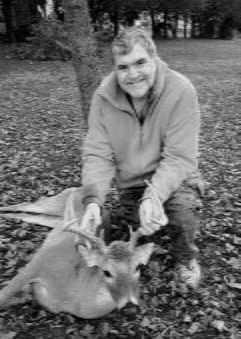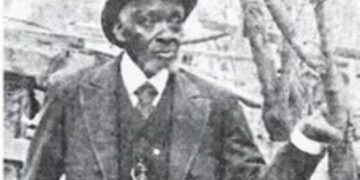
Graduate of Bergton Elementary (Class of ’65)
I never was that great at bowhunting. Not due to any lack of effort. I’ve spent a lot of time in my old Baker tree stand and carried my bow a lot of miles scouting before gun season. I have managed to tag a few deer but more by accident than skill. I have shot over them and under them. Deer has “jumped the string” and I have misjudged distance. I have hit limbs and used the wrong sight pin. I even dropped my bow out of my tree stand in WVA after an unsuccessful shot. If you find an old arrow in the woods, it’s probably mine.
When I began bow hunting many years ago, recurve bows were the norm. Compound bows were just beginning to make the scene. My first recurve bow was short and light weight and easy to carry in the woods. Add an arrow rest, some string silencers and a few arrows and you were good to go. Finger and arm guards were a must to prevent blisters and arm burn.
Next, I bought an inexpensive Jennings compound bow. It was smooth and worked very well. The drop-off in pull, sight pins and a release improved accuracy and range quite a bit. Always trying to do better, I then purchased a used PSE cam bow that I still have today. However, I’m not sure my shoulder will allow me to pull it anymore. The goal of any archer either shooting target or hunting is to consistently place the arrow where you want it. That requires a lot of practice, and the bow must be “tuned” to the shooter. I know bows are quite a bit different now, but back then it started with arrow length and how you released the arrow. I had quickly learned that a mechanical release is more consistent and less painful than using my fingers. For my draw length I needed a 32” arrow. That was unfortunate because it meant the arrow was heavy. A heavy arrow means more arc in the trajectory which means judging distance becomes more critical.
By shortening the arrow to extend just beyond the arrow rest (30.5”), according to the charts I could use a 2213 aluminum arrow (22 mm dia., .013 wall thickness), which was the lightest arrow weight combination available. Target points were not a problem, however for hunting I had to align each broadhead so that the razor blades would not contact the bow riser at full draw. I shouldn’t tell this, but while aligning the razor heads one Sunday afternoon I shot an arrow into the wall at our old house. The broadhead is still in the wall to this day.
There is much more to tuning a bow. The type of arrow rest, nocking point, sight preference, broadheads, anchor point, etc. and if you change one thing it effects it all. I had my old PSE tuned so that my hunting broadheads would shoot the same as my target points. Not an easy task. I imagine modern bows with overdraws, and the cross bows of today are easier to deal with.
As I have said before, sometimes it’s better to be lucky than good. One morning during a scouting expedition I proved that to be true. I was running late that morning, and it was well past daylight when I parked in the field in Slate Lick Hollow. There were several vehicles already there. Not a great start but I would make the best of it. I had only walked a short distance back the old road when a deer jumped-up and stood in the road in front of me, about 50 yards away. Too far for a shot but it didn’t spook. I stood still but got my bow and arrow ready for a shot. By then I could see it was a spike buck. It seemed curious and started working its way toward me. At about 20 yards the spike gave me a clear shot so I sent the arrow on its way. The shot looked good. The young buck jumped about 10 yards and stood still. Did I miss? I didn’t think so! Suddenly the deer staggered and collapsed on the spot. Upon inspection I had made a perfect shot. After field dressing the spike, I had my shortest drag ever to the truck. Prob- ably less than 45 minutes start to finish and I was on my way home! You never know what will happen when you take your bow for a walk!
































